An easy to make, gentle all-in-one cleanser, this DIY micellar water is perfect for sensitive skin. Find out what is micellar water and if you should use it.
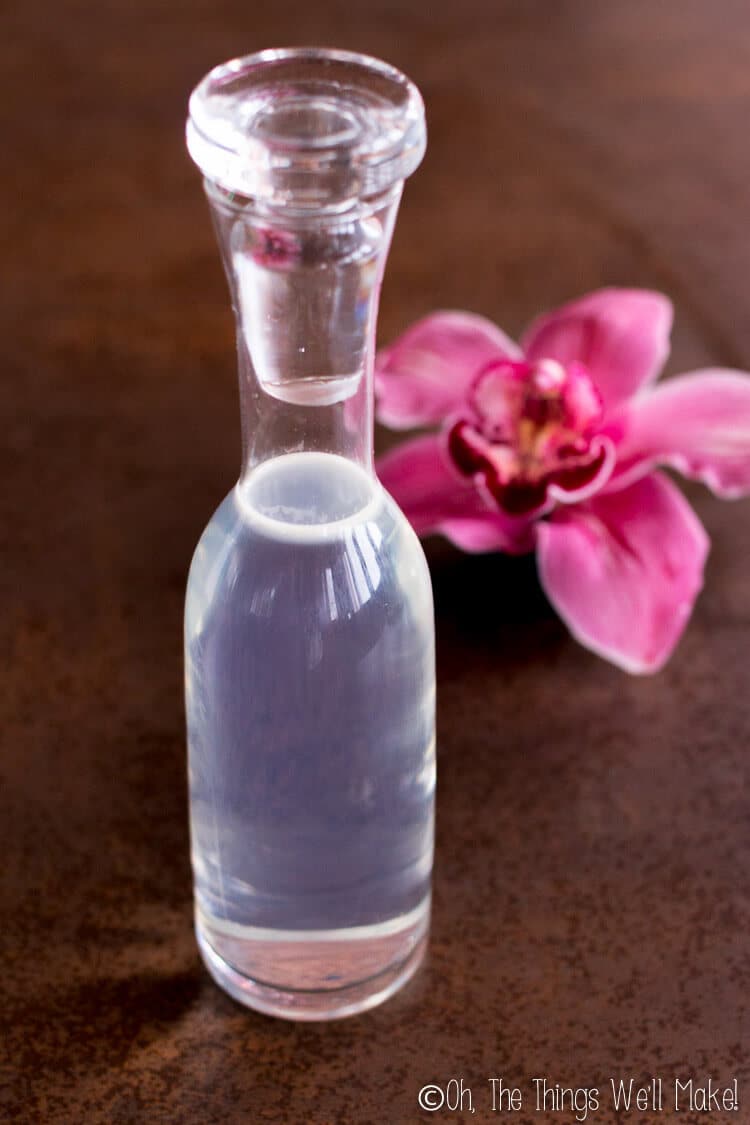
What is Micellar water?
Micellar water is a water based cleanser that is normally used to gently cleanse your face without the need to rinse it off afterwards. It pretty much looks like water, but it has gentle cleansing and moisturizing qualities. Micellar water can be used as an all-in-one cleanser, and is especially great for those who are always on the go (Who has time to rinse?) or those with sensitive skin.
While it is usually said to be good for all skin types, it may be a bit mild for those with overly oily skin or those who wear a lot of oil based or waterproof makeups. That said, I used it to remove my DIY Halloween costume makeup off my son’s face between a school activity and a birthday party, and it worked perfectly. I’ve also found it to work well at removing long lasting type lipsticks.
Micellar water is made up of micelles that are suspended in the aqueous (water based) ingredients of the cleanser. It all sounds quite fancy, which is why most micellar waters are pretty pricey, but it is really quite simple and really doesn’t distinguish these cleansing waters from other types of cleansers (which also have micelles).
What are Micelles?
Micelles are basically little formations of surfactants that come together and are suspended in the water or aqueous ingredients of the cleanser. When using a low concentration of surfactants, as you do in a non-rinse product like this one, the micelles stay in a sphere formation. Surfactants have a hydrophilic (water loving) head and hydrophobic (water “fearing”) tail. So when you mix together the surfactants and water, the surfactants tails will start to hide from the water, coming together to form these little spheres of surfactants.
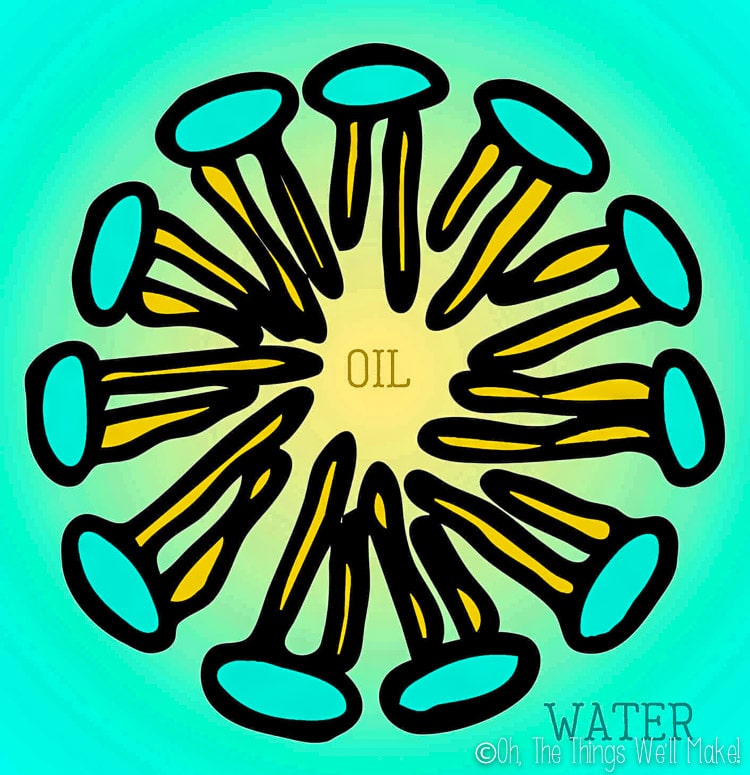
The idea when using micellar water is that the oils and dirt of your skin will join together with the hydrophobic tails of the surfactants, and be wiped away with them.
What are surfactants?
Surfactants lower the surface tension between liquids. They can act as detergents or emulsifiers, or have other qualities. Most detergents, shampoos, and shower gels are surfactant based.
Up until now, I have focused this blog on soap based cleansers because I wanted to give people a simple, natural way to clean their homes and bodies. In the natural communities, soaps are generally embraced by almost everybody, and it’s quite easy to make your own bar soap or even make your own liquid soap.
On the other hand, I have heard many people say that they want to avoid surfactants because they are “chemicals” or they have heard bad things about some of the more commonly used foaming anionic surfactants like SLS (sodium lauryl sulfate) or SLeS (sodium laureth sulfate). The problem with some of these harsher surfactants is that they can be irritating to your skin, especially when used at high percentages. (I also make my own toothpaste to avoid SLS in toothpaste as it can cause canker sores, and my husband and I used to get them quite often.)
It is impossible to avoid all “chemicals”, of course. Even soap uses NaOH (which is what scares many people away from making it) and, well, H2O, and sometimes NaCl. But, it is also pretty much impossible to avoid all surfactants, unless you only use soap and body butters for everything. Even emulsifiers like BTMS (that I used in my homemade conditioner and roll on deodorant recipes) and really any of the more common “natural” emulsifying waxes are surfactants. (mostly cationic and non-ionic in nature). So, if you’ve ever used a lotion, a cream with water in it, a “normal” shampoo (aka. not Castile soap), a conditioner, you’ve been using surfactants of some sort or other.
I don’t want to get too far into talking about surfactants right now as that warrants a separate post, but I would like to say that surfactants are wonderful for many applications, and there are a lot of gentle, natural surfactants out there than can be used and that are great for people with sensitive skin.
Soap has a high pH, and that can be problematic for some people with sensitive skin as our skin pH is on the more acidic side. You can’t just lower the pH of liquid soaps because it will fall apart. On the other hand, surfactants can generally be lowered into a desired pH range. I personally don’t notice issues when using soap on my skin, but my hair can’t handle the high pH of soaps, which is why I’ve never shared a recipe for a “shampoo bar” as of yet. I don’t like sharing things that I don’t use and love myself!
Gentle non-ionic surfactants
I decided to begin with micellar water as an easy recipe to introduce surfactants because it is simple to make and uses a nice, gentle surfactant that should be great for all skin types. This micellar water is nourishing, and doesn’t need scrubbing or rinsing, making it great for people who are on-the-go and especially great for people with sensitive skin. (If you find it bothersome to leave traces of the product on your skin, though, you can always resort to rinsing it off, and keep using it as a super gentle alternative to cleansers with a higher concentration of surfactants.)
Non-ionic surfactants are generally quite mild cleansers and great for facial products like this one.
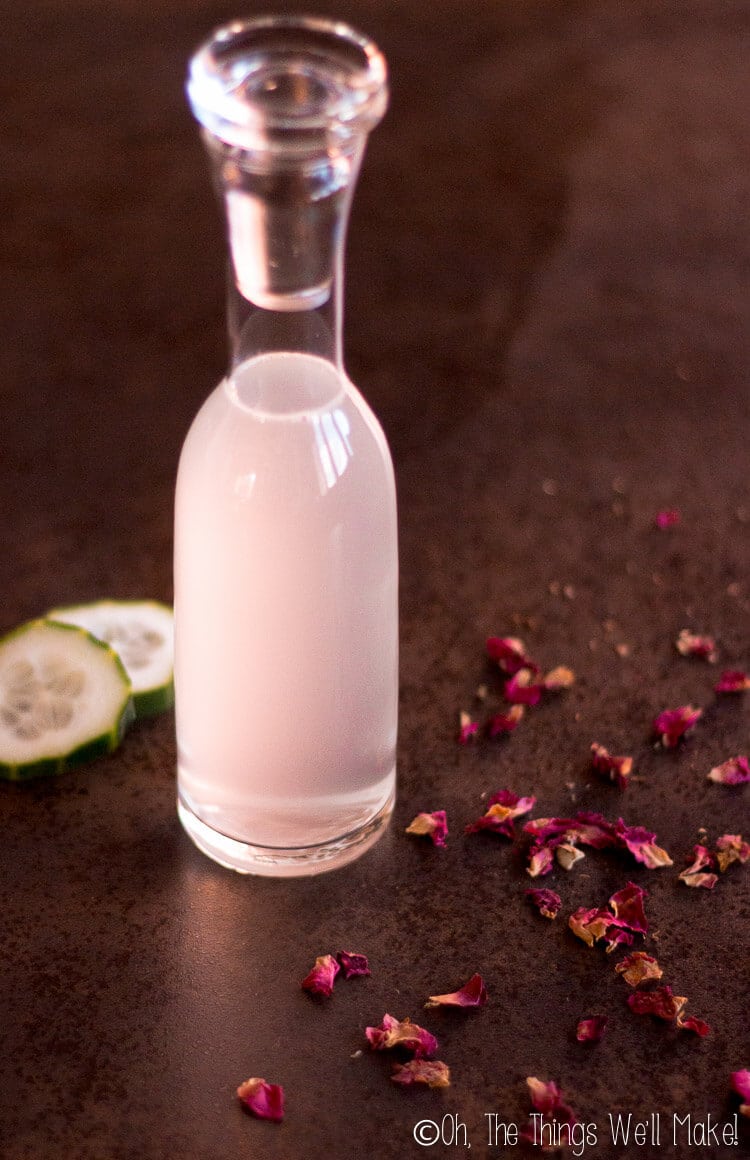
Nourishing additions to your DIY Micellar Water
With rinse off products, you are more likely wasting your money on adding large amounts of extracts, hydrosols, and more expensive type ingredients. Micellar water, on the other hand, isn’t normally used as a rinse off product (you could rinse it off if you wanted to, but it’s not how it’s generally used). For that reason, the ingredients you use will stay on your skin, making micellar water a great place for adding fun, nourishing ingredients.
Understanding the ingredients
I’m giving you a sample recipe that has worked well for me, but you can switch things up to use different extracts and hydrosols to suit your purposes, or just to use up whatever you have on hand. I know a lot of you like that I explain why I use certain ingredients, to help you better understand if and how you can tweak the ingredients in the recipe, so let me explain why I chose what I chose.
- Decyl Glucoside: This is the surfactant, and the active cleansing ingredient of your DIY micellar water. In my first batch, I used Coco Glucoside, a non-ionic surfactant that is considered safe and has a score of 1 on the EWG Skin Deep Database. It is a mild, foamy surfactant derived from coconuts and glucose. Decyl Glucoside appears to be the most easy to find on Amazon, and seeing as it was more readily available to more of you, I decided to make my next batch with it. It is also a glucose and coconut derived surfactant, and it also has a safe rating of 1 on the EWG scale. While Lauryl Glucoside is another very similar mild, non-ionic surfactant that you could just as easily use, but it also tends to be thicker and more opaque than the other two. It is an option, but I prefer the other two.
- Rose water: I added rose water because it’s fairly easy to find, inexpensive, and has a lovely scent and possibly anti-inflammatory properties. It works well on sensitive skin, and may help with redness, acne, eczema, etc.
- Aloe liquid: Aloe is also anti-inflammatory and healing. It may help stimulate the growth of new cells. It’s also has been known to help people successfully deal with acne, sunburns, and other skin conditions.
- Glycerin: Glycerin is a humectant, meaning that it helps draw moisture from your environment, bringing it into your skin to help hydrate it. You’ll want to keep the amount of glycerin at up to 5% of your recipe. Using more than that and it can leave your skin feeling sticky afterwards. If you are using glycerin based extracts in your micellar water, you’ll want to reduce the glycerin amount, or leave it out all together to prevent that. (If you find that even at 5%, the water is too sticky for you, you can reduce the amount to suit your taste/your skin.)
- Cucumber extract: Cucumber extract is very soothing and hydrating, and also has astringent properties that can help reduce puffy eyes. Cucumber extracts are usually glycerine based, so you could either switch it out for another glycerin based extract, or use just plain glycerin if you don’t want to use any extracts.
- Cosgard/Geogard: This is one of the few broad spectrum preservatives that is accepted for ECOCERT certified cosmetics. I like it because you only need to use at around 1% of the final concentration to preserve your product.
- Distilled water: While I guess you could boil your water first and use that, I prefer to use distilled water to protect against any unwanted microbes as well as other unknowns that can be found in tap water.
- Lactic acid: I didn’t need to add lactic acid to my micellar water, but if you were to use different ingredients, a different water, or something that may alter the pH in some way, you could add a few drops of lactic acid to bring down the pH as needed. (An ideal pH would be between 5 and 6). You can use inexpensive test strips to get an idea of the pH.
Optional additions to play with (with cons)…
- Jojoba oil: Jojoba oil is an oil soluble humectant. It helps moisturize your skin. I tried adding a few drops to the cleansing water in my first batch, and I think it helped slightly when it comes to removing oil based and other hard to remove makeups. Adding too much oil will cause a layer to form on top of the water. When I only used a few drops, it stayed pretty well suspended in the mixture, but left the water looking slightly cloudy. (Actually the pictures are from my first batch with some jojoba oil in it. The recipe below makes a very clear liquid that pretty much just looks like water.) If you wanted to add more jojoba oil, you’d have to either add some sort of solubilizer to your cleanser, or you’d have to shake it to mix it before using each time.
- Essential oils: You can potentially add essential oils for fragrance, but again, adding too much will mean that they will float on top. The surfactant we are using isn’t really a solubilizing one, so you’d have to mix the essential oils with a solubilizer before adding them into your water, if having a stable, unseparated liquid is important to you. I prefer to get a nice fragrance from the floral waters or hydrosols used.
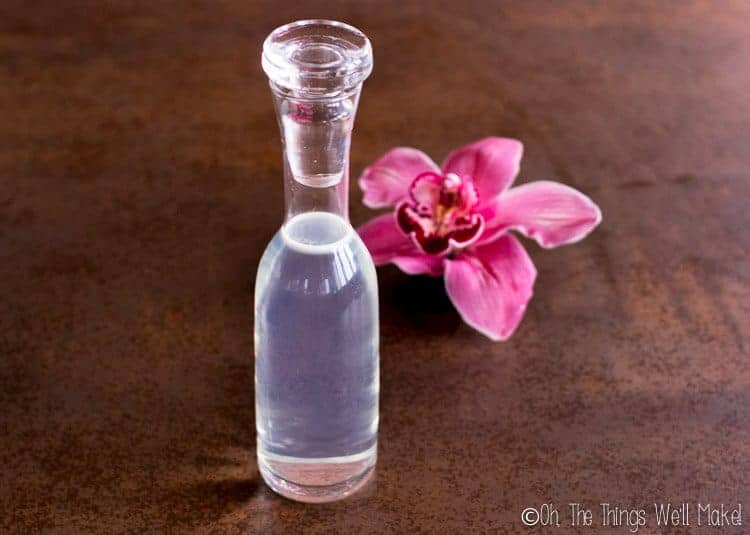
How to make Micellar Water
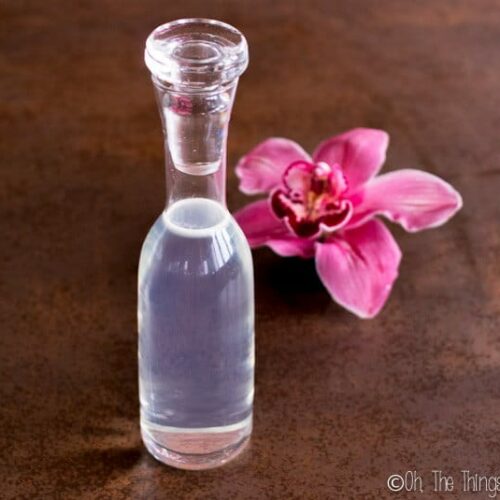
DIY Micellar water
Materials
- 61 g distilled water
- 15 g rose water
- 15 g aloe juice
- 2 g cucumber extract
- 3 g glycerin
- 3 g decyl glucoside
- 1 g geogard (Also known as Cosgard) or other preservative
- lactic acid as needed to lower the pH
Instructions
- Weight out and combine together the water, rose water, aloe juice, glycerin and cucumber extract.
- While whisking, slowly add the the Decyl Glucoside, and whisk until it is fully incorporated into the other ingredients. Blending too vigorously will make a lot of foam.
- Add the preservative of choice, and whisk into the other ingredients.
- When any developed foam has settled, pour your micellar water into the dispensing bottle of your choice. Bottles with flip top caps are a convenient option for dispensing and using it.
How to use micellar water
Moisten a cotton pad or cotton cloth with the micellar water and gently wipe it across your skin. Repeat with a clear area of the cotton cloth or a new cotton pad until you see no remains of dirt or makeup coming off onto the cotton.
While it isn’t necessary to rinse your skin after using the micellar water, if it feels tight on your skin, or you don’t like the feeling it leaves, you can rinse it off after using.
 Español
Español
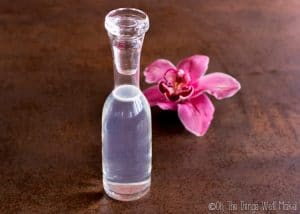
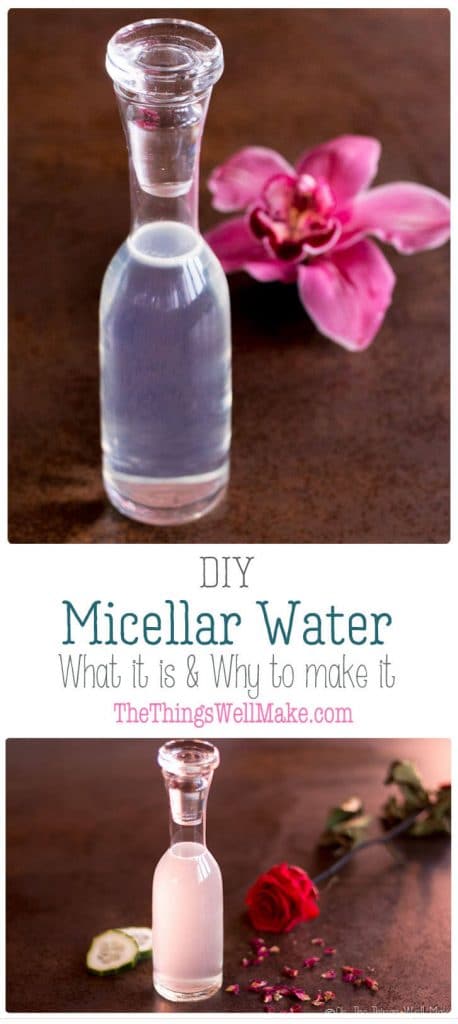
 How to Make Chai Tea From Scratch (In Bulk)
How to Make Chai Tea From Scratch (In Bulk)
Catherine
Hi Tracy,
I’m so impressed by your knowledge of surfactants and what is safe for the human body.
With very sensitive skin, I am keen to try an oil cleanser.
I found a recipe with castor oil, sunflower oil and a drop of hemp seed oil, but of couse this does not mix with water.
Can you advise on a safe surfactant to add?
Cheers
Catherine
Tracy Ariza
Hi Catherine,
You can’t really add a surfactant to it as they won’t mix. Surfactants usually do have some emulsifying properties, but most have very limited abilities. Sometimes they can’t even incorporate essential oils into a mix like this one.
Oil cleansers are meant to be used in a different way than surfactants. You basically “dissolve” the dirt and grime into the oil, and then use warm water to slowly remove it all.
There are ways to make it easier to remove, like adding an emulsifier to your oils. It’s what I did in my emulsified sugar scrub. You can use something like that on your face, too.
There are also some products that can help you make a oil-based gel cleanser. They tend to be difficult to work with, though. If you’re interested in seeing something like that, I can add it to my to-do list of things to post. 😉
Amber
I’d really love to see a post on a diy oil cleanser. I’ve been wanting to use hemp, olive and sunflower oil too, maybe some rose water or witch hazel (these are all ingredients that I already have) and just can’t seem to find an explanation on what kind of ingredients you definitely need in an oil cleanser.
Tracy Ariza
Hi Amber,
I can keep that in mind for future experiments and posts. 😉
I know coconut oil is supposed to be quite cleansing, as is castor oil!
I don’t think you should add water-based ingredients like rose water or with hazel. They won’t incorporate into the oils. You’d need an emulsifier to get them together and then you’d end up with a cleansing cream rather than an oil cleanser. (And you’d need a preservative!)
Oil cleansers are usually just that- a mix of oils!
It’s the method of applying and removing that makes them effective.
Jenni
Wouldn’t the emulsifier also act as a surfactant when the emulsified oils are lathered on the face with water? I believe that’s what cleansing balms are.
Tracy Ariza, DDS
Yes, that’s correct Jenny.
It does act as a surfactant. The mechanisms are a bit different, but, yes, that is absolutely true!
Tracy Ariza, DDS
I just want to clarify that I sometimes say things like soap vs. surfactants- which makes it sound like soap isn’t a surfactant- which, of course, isn’t true. It’s sometimes hard to express what I’m trying to say in way that won’t confuse people, especially when comparing different ingredients.
Ingredients thought of as emulsifiers usually will have surfactant properties just like surfactants often have emulsifying properties. 😉
Debbie
Hi
I’m wanting to make a natural spray that I can use on my dogs to freshen them up in between washes and your recipe is the only one I’ve been able to find that is natural and I’d be comfortable using.
However, I can’t find a Uk supplier for Cosgard. Would it be possible for you to recommend another natural preservative please?
Also, I want to add different essentials oils to the mix, would that work (mix in the water).
Finally, what would the self life be for this product?
Apologies for the long post! I’m new to making my products, but want to learn to make as many natural home products as I can to reduce the chemicals I use and reduce the amount of plastic too.
Thanks
Tracy Ariza
Hi Debbie,
There are lots of decent natural preservatives:
Cosgard is also called Geogard in some places. Other good ones are Rokonsal, Sharomix, preservative ECO, Leucidal.
Most of the natural ones will help keep the product safe for more than 3 months. I like to put a 3 month date on them just because I am making this myself and am not doing microbial testing to make sure things are fine past that. The 3 month date was recommended by my supplier for DIY-ers. 😉
As for EO’s- you can either use what you like fragrance-wise- or for a dog, you may want to consider EO’s that will help against insects. (See my dog shampoo recipe for ideas. I would keep the EO level to below 2% of this particular recipe, though.) 😉
Another idea I have for you- you could use this in a foaming dispenser and it would be like a light washing “mousse” for them!
Dallis Plotsch
can you make rose water?
Tracy Ariza
Hi Dallis,
Yes, you can, but it’s slightly complicated unless you have specialized equipment. I have a distiller which works well to make rose water by placing water underneath and rose petals on a grating above it. You then allow the water vapor to pass through the petals and then condense the water to use. The water becomes very fragrant and is wonderful for using in food and cosmetic recipes. There are a few ways you can make a similar floral water in your kitchen with more common tools (pots and pans), but it’s not exactly the same. Perhaps I can do a post on the processes and compare them. Would you be interested in that?
Lisa
Could I leave out the glycerine? I don’t use glycerin unless it is very humid weather
Tracy Ariza
Hi Lisa,
Yes, of course! You can just sub it for more water or hydrosol.
Keep in mind that most extracts, like the cucumber extract, are normally glycerin based too. So, if you’re trying to avoid glycerin, you’ll probably want to drop those too. 😉
Stacey
Hello, I wanted to comment on the use of distilled water. In the distillation process to remove all ions, the pH would be near neutral (7) immediately after it is made. I presume it would stay in a neutral pH range if bottled in a glass jug and sealed immediately. The reality is, distilled water will be exposed to air, and gases will start to dissolve into it. In particular CO2, carbon dioxide. Carbon dioxide binds with H2O to create an acid called Carbonic acid (H2CO3). Carbonic acid will dissociate into H+ ions (hydrogen) and HCO3- (bicarbonate) ions. This will drop the pH somewhere around 5. In my experience (I use it frequently at work) I have tested it to be in the range of 4-5.5. I suspect room temperature and exposure time to air both play a role as to how acidic it will become. I have not tested this assumption.
So, long story to simply state, if you use distiled water, your product will be acidic. No need to add lactic acid or other to make the finished product acidic. Given our skin ph ~5.5, I suspect distilled water would be a good fit.
Tracy Ariza
Hi Stacey,
Thanks for your explanation.
Yes, this recipe, as made, will normally fall into a good range for your skin (slightly acidic), but it can vary a lot depending upon the preservative you use. Using a different surfactant may also change the pH. (The preservatives I use tend to be on the acidic side too.)
Different preservatives are effective in different pH ranges. I like to give people lots of options for changing up my recipes, so I wrote the part about the lactic acid just so people are aware that certain changes to the recipe may give you a pH that may bring it into a range that isn’t ideal for the particular preservative chosen.
I personally have never needed it in this recipe either, but it’s good for people to be aware about what can be done to adjust pH if need be. 😉
Helen Wu
Where did you get this cute bottle? I need it in my life for my diy miceller water.
Tracy Ariza
Hi Helen,
Unfortunately, I bought it at a local shop here in Spain that isn’t even open anymore.
That said, I did a search on Amazon for glass bottles with glass stoppers and found this one. From there, though, I realized that it’s really probably a liquor decanter. A search for either liquor decanter or whiskey decanter gives a huge range of beautiful bottles!
Jenna
Is BTMS-25 gentle enough to be used for something like this?
Tracy Ariza
Hi Jenna,
BTMS is a cationic emulsifier. While it is a surfactant, it’s not really the same type as the surfactants that I have mentioned.
These are more like soapy detergents while BTMS is more of a solid wax that you use to emulsify oils in water. It’s great for making your own hair conditioner, but using it won’t give you a product like micellar water.
Jenna
OK, thank you!
susanna
Can I please know if once made can I sell this Micellar water?
Tracy Ariza
Hi Susana,
Whether or not you can sell this micellar water will depend upon the regulations of your particular country. Most countries will make you do stability tests and many will require microbial tests to show that your preservative is doing its job. You’ll have to look into the particular regulations for your country.
I don’t make products to sell and have no problem with somebody making a product based on my recipe to sell. In any case, most people will tweak the ingredients to suit their taste.
Johane
Do you need to shake the micellar water?
Tracy Ariza
Hi Johane,
No, there’s no need to shake it. Once the ingredients have fully mixed they should stay that way, unless you add jojoba oil and/or essential oils to it. Then, unless you add some sort of solubilizer like sulfated castor oil, they will probably float on top. In that case, you’d probably want to gently shake it before use. (Don’t shake it vigorously, or you’ll end up with a lot of bubbles and foam!)
Linda
maybe I will learn from here thanks!